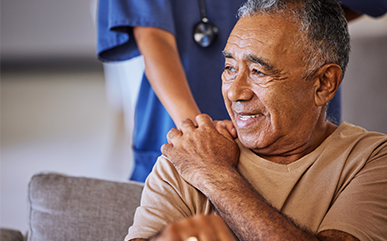Critical considerations for re-starting clinical trials in countries recovering after the COVID-19 pandemic
The COVID-19 pandemic led to a variety of risk-based adjustments to clinical trial conduct. Mitigation measures had to be taken based on a risk assessment by sponsors and investigators in which risks of involvement of subjects in a clinical trial were weighed against their anticipated benefit for trial subjects, society and for data validity, whilst prioritizing trial subject safety.
It is expected that gradually the impact of the COVID-19 pandemic on local healthcare systems and daily life will subside, starting in the Asia Pacific region which was first impacted by the pandemic. Now is the time to prepare for a structured exit from the risk mitigation measures taken. A carefully executed exit strategy will limit the impact of the COVID-19 pandemic on trial subjects, recruitment and on trial data validity.
In line with ICH GCP principles, the risk assessment needs to be re-checked and updated by sponsors (at the trial-level) and by investigators (subject-level) as the COVID-19 pandemic unfolds. This includes defining criteria for a structured approach to re-start normal clinical trial activities in countries rebounding after the COVID-19 pandemic.
Typical indicators for country-level recovery from the COVID-19 pandemic are:
- Local and national governmental policies are revoked (e.g. confinement, social distancing or travel restrictions are lifted)
- Trial sites can be accessed again (by trial subjects, site monitors, or couriers)
- Site staff is available again.
The re-start strategy should also consider any legal preconditions which may impact the timing when risk mitigation measures can be lifted.
It is important to perform an exact assessment of all required regulatory preconditions before risk mitigation actions can be revoked because local regulations differ considerably across countries:
- If enrollment of new subjects has been temporarily halted, re-starting recruitment of new trial subjects could be considered once the trial-, site- and subject-level risk benefit balance permits. While some countries require no prior notification of the regulatory authority (provided that the recruitment halt was not linked to the safety profile of the investigational product), some countries may expect a notification and others even require prior authorization via a substantial amendment to re-start recruitment.
- For some countries regulatory authorities expect a summary of all actions taken during the COVID-19 pandemic, along with a risk assessment of their effect on patient safety and data integrity and a plan to follow up on any gaps caused e.g. by reduced on-site monitoring activities during the pandemic. Country guidance and regulations may require that such summary is notified to regulatory authorities on a regular basis until the COVID-19 pandemic officially ends.
For many trial sites, on-site monitoring has not been feasible during the COVID-19 pandemic and returning to normal monitoring activities could be crucial to maintain patient safety and data validity. In close collaboration with the trial sites, sponsors and CROs should agree on the earliest timepoint when on-site monitoring activities can be resumed. This will be driven by both site-level factors (e.g. site staff availability, social distancing possibilities) and country-level factors (e.g. travel restrictions).
Once on-site monitoring can resume, emphasis should be put on verifying first critical data such as adverse events, primary endpoints, eligibility of any newly enrolled trial subjects and adequate documentation for updates to the Informed Consent which may have become necessary due risk mitigation actions taken during the COVID-19 pandemic. Furthermore, an increased frequency or prolonged duration of site monitoring visits may be needed to catch up on activities.
- If remote source data verification (SDV) has been performed during the pandemic it needs to be checked to which extent re-monitoring is required, in particular if remote SDV was based on pseudonymized data which cannot be considered as source documents.
- Protocol deviations due to COVID-19 should be carefully documented and ideally tagged according to an agreed naming convention for easy identification of affected trial subjects and trial data.
- Where direct-to-patient delivery of Investigational medicinal product supply was performed, adequate reconciliation review needs to occur.
- In case home nursing took place, the delegation log should have been updated and communication between the home nurse and site staff needs to be documented.
- If local laboratories were used, their certifications and laboratory reference ranges need to be on file in the investigational site file.
All decisions and actions taken during the COVID-19 pandemic should be carefully documented by sponsors and investigators to ensure that during audits or inspections there will be solid evidence on how decisions were taken with the goal to ensure the protection of patients’ rights, well-being and safety during the pandemic.
It is also highly advisable to involve biostatisticians into the evaluation of how the pandemic has affected the validity of clinical trial data (e.g. due missing data, protocol deviations, interruption of treatment, shifts in the trial population in terms of age, ethnicity or medical background). Changes to the statistical analysis plan may be required.
In summary, successful re-start of clinical trial activities after the COVID-19 pandemic relies on careful consideration of a multitude of aspects, close collaboration between all affected stakeholders, and proactive preparation for an exit strategy from COVID-19 risk mitigation activities.
Related Insights
Whitepaper
Master Protocols from Design to Delivery
Sep 30, 2021
Podcast
Enabling Successful Sites, Episode 2: Empowering Sites to be More Inclusive Through Cultural Sensitivity Training
Jun 28, 2024
Webinar
Accelerating vaccine development through operational excellence
May 16, 2024
Blog
What COVID Taught Us About Focus, Innovation, and Leadership
Sep 24, 2021
Video
Part 2: Risk-based Quality Management Video (RBQM) Series
Nov 11, 2021
Video
How to transition existing trials under EU-CTR
Feb 1, 2023
Playbook
The upward trend of FSP outsourcing
Sep 29, 2022
Blog
Including patients in DCT design
Sep 13, 2022
Podcast
Decentrally Speaking | Episode 2: The Shifting Roles of Pharmaceutical Depots within a Decentralized Trial Environment
May 9, 2022
Blog
End-to-end risk management: Getting the most from your program
Apr 4, 2022
Video
Part 2: Practically Speaking: Driving Clinical Transformation
Feb 9, 2022
Video
Part 1: Practically Speaking: Driving Clinical Transformation
Feb 9, 2022
Related Insights
Whitepaper
Master Protocols from Design to Delivery
Sep 30, 2021
Podcast
Enabling Successful Sites, Episode 2: Empowering Sites to be More Inclusive Through Cultural Sensitivity Training
Jun 28, 2024
Webinar
Accelerating vaccine development through operational excellence
May 16, 2024
Blog
What COVID Taught Us About Focus, Innovation, and Leadership
Sep 24, 2021
Video
Part 2: Risk-based Quality Management Video (RBQM) Series
Nov 11, 2021
Video
How to transition existing trials under EU-CTR
Feb 1, 2023
Playbook
The upward trend of FSP outsourcing
Sep 29, 2022
Blog
Including patients in DCT design
Sep 13, 2022
Podcast
Decentrally Speaking | Episode 2: The Shifting Roles of Pharmaceutical Depots within a Decentralized Trial Environment
May 9, 2022
Blog
End-to-end risk management: Getting the most from your program
Apr 4, 2022
Video
Part 2: Practically Speaking: Driving Clinical Transformation
Feb 9, 2022
Video
Part 1: Practically Speaking: Driving Clinical Transformation
Feb 9, 2022





